Sample data:
y1 = c(1,2,3,4)
y2 = c(6,5,4,3)
x = c(1,2,3,4)
df = data.frame(x,y1,y2)
My Question:
I would like to combine the following two graphs into one, using ggvis:
df %>% ggvis(~x,~y1) %>% layer_paths()
df %>% ggvis(~x,~y2) %>% layer_paths()
However, the following does not work:
df %>% ggvis(~x,~y1) %>% layer_paths() %>% ggvis(~x,~y2) %>% layer_paths()
